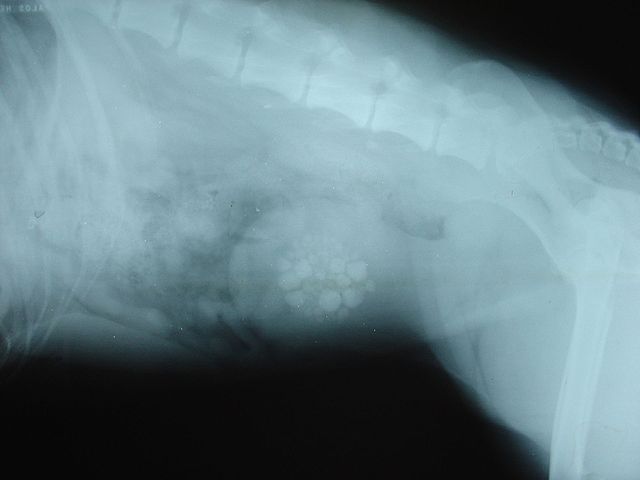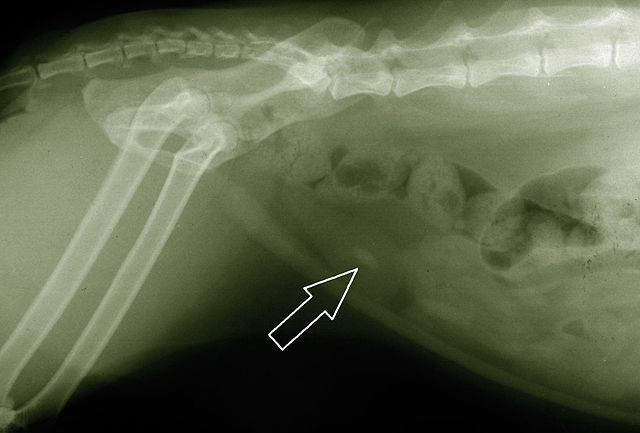Bladder stones or uroliths are a common occurrence in animals, especially in domestic animals such as dogs and cats. Occurrence in other species, including tortoises, has been reported as well. The stones form in the urinary bladder in varying size and numbers secondary to infection, dietary influences, and genetics. Stones can form in any part of the urinary tract in dogs and cats, but unlike in humans, stones of the kidney are less common and do not often cause significant disease, although they can contribute to pyelonephritis and chronic kidney disease. Types of stones include struvite, calcium oxalate, urate, cystine, calcium phosphate, and silicate. Struvite and calcium oxalate stones are by far the most common. Bladder stones are not the same as bladder crystals but if the crystals coalesce unchecked in the bladder they can become stones.
X-ray of a single, large bladder stone in a dog with a bladder located more to the rear than is usual
X-ray of bladder stones in a dog
X-ray of a struvite bladder stone in a cat
Struvite stones
The Yorkshire Terrier, also known as a Yorkie, is a British breed of toy dog of terrier type. It is among the smallest of the terriers and indeed of all dog breeds, with a weight of no more than 3.2 kg (7 lb). It originated in the nineteenth century in the English county of Yorkshire, after which it is named. The coat is tan on the head and dark steel-grey on the body; no other colour is accepted by either The Kennel Club or the Fédération Cynologique Internationale.
Yorkshire Terrier
A Yorkshire Terrier from 1915
A painting from the 19th century depicting a Yorkshire-like terrier by Ernest Gustave Girardot
A silver-blue and pale cream Yorkshire Terrier, with characteristic long hair








